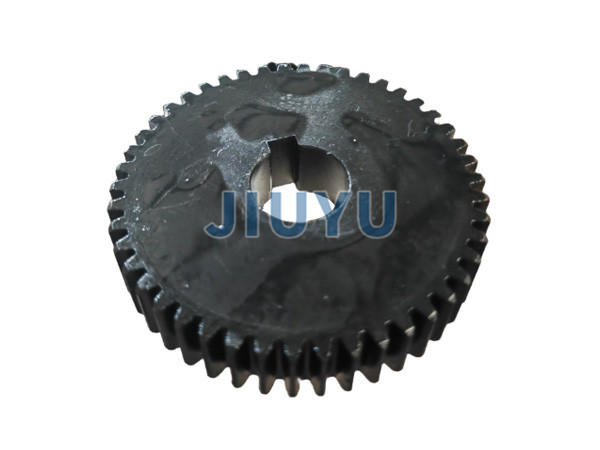
Product Details
The application industry and maintenance aspects of industrial sprockets:
Application Industry
Industrial Automation Production Line: In automated production lines such as automotive manufacturing and electronic equipment production, industrial sprockets are commonly used in conveyor chain systems to accurately transport components to various processing stations, protecting the effectiveness and stability of the production process.
. For example, the chain plate conveyor on the automobile assembly line drives the chain through sprockets to transport automobile parts in an orderly manner to different assembly positions Mining machinery: In mining operations, equipment such as ore hoists and scraper conveyors cannot do without industrial chain wheels. The sprocket bears enormous tensile and impact forces, driving the chain to lift and transport ores. For example, a scraper conveyor drives a scraper chain through a sprocket to transport coal from the mining face to the surface underground in a coal mine Metallurgical industry: In equipment such as continuous casting machines and rolling mills in steel plants, industrial sprockets are used in transmission systems to accurately control the conveying and processing speed of steel. For example, the ingot drive system of the continuous casting machine adopts chain wheel drive to confirm that the ingot drive accurately pulls the casting billet and protects the smooth progress of continuous casting production Agricultural machinery: Industrial sprockets are also used in agricultural machinery such as combine harvesters and seeders. For example, in the conveying chain and threshing system of a combine harvester, the sprocket drives the chain to move, achieving functions such as conveying, threshing, and separating cropsMaintenance
Regular lubrication: Regularly lubricating the sprocket is an important measure to reduce wear and friction coefficient.
. Generally, according to the working environment and frequency of use, the sprocket is lubricated at regular intervals (such as weekly or monthly). One on one chain lubricant or high-temperature resistant (based on actual reports) and wear-resistant (based on actual reports) lubricant can be used to evenly apply the lubricant to the tooth surface of the sprocket and the connection of the chain Cleaning impurities: The sprocket is prone to absorbing dust, dirt, and other impurities during operation, which can accelerate the wear of the sprocket and chain. Therefore, regular cleaning is necessary. You can use a brush or compressed air to remove impurities from the surface of the sprocket. For some stubborn oil stains and dirt, you can use a one-on-one cleaning agent for cleaning, but be careful to avoid corrosion of the sprocket surface by the cleaning agent Check the wear condition: Regularly inspect the wear condition of the sprocket, and pay attention to checking the tooth surface, tooth top, and wheel hub. You can use measuring tools such as calipers and micrometers to measure the key dimensions of the sprocket, compare them with the original dimensions, and determine the degree of wear. If the wear of the sprocket exceeds the specified range, it should be replaced in a timely manner to avoid affecting the transmission efficiency and normal operation of the equipment Adjust chain tension: The chain may elongate due to wear and tear during use, resulting in insufficient chain tension and affecting transmission performance. Therefore, it is necessary to regularly check the tension of the chain and make adjustments. Generally, the chain is maintained at the appropriate tension by adjusting the center distance of the sprocket or using a tensioning device


